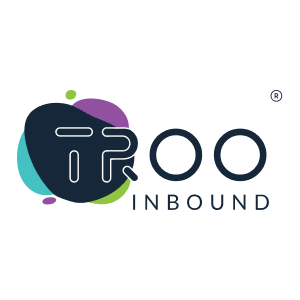Streamline Your Strategy: Migrating from HubSpot to What Fits You
 TRooInbound
TRooInbound
I. Introduction
In today's dynamic digital landscape, website migration plays a crucial role in modern business strategies. Businesses constantly evolve, and their online presence needs to reflect that change. This guide explores migrating from HubSpot to two potential destinations: HubSpot Business Units and the popular content management system (CMS) WordPress. It highlights the importance of a seamless migration process for businesses to adapt effectively to the ever-changing digital landscape.
II. Understanding HubSpot Business Units
HubSpot Business Units (HBU) offer a way to organize your HubSpot account based on specific departments, brands, or product lines. This segmentation helps manage marketing campaigns more efficiently and fosters better collaboration between teams.
Benefits of HubSpot Business Units
Improved Organization & Management: HBU allows you to structure your marketing efforts by isolating campaigns and data for specific segments.
Enhanced Collaboration: Teams working on different units can share resources and access relevant data without interfering with other projects.
Streamlined Reporting & Analytics: Gain deeper insights into individual unit performance by analyzing segregated data and reports.
III. Planning Your Migration Strategy
Before diving into the migration process, it's vital to assess your needs. Consider your business objectives and growth plans. Do you require more granular control over marketing activities? Is cost a significant factor? Defining clear migration goals, such as preserving data integrity, improving workflow efficiency, and optimizing website performance, will guide you toward the most suitable platform.
A. Defining Migration Goals
Data Integrity: Ensure accurate data transfer during migration to maintain historical insights and avoid disruption in analytics.
Workflow Efficiency: Streamline content creation, campaign management, and team collaboration for a more productive workflow.
Website Optimization: Enhance website performance and user experience to improve conversion rates and overall brand image.
IV. Step-by-Step Guide to HubSpot to HubSpot Business Units Migration
Migrating from a single HubSpot account to multiple HubSpot Business Units involves careful configuration and data transfer.
Configure Business Units: Define unit names, assign permissions, and set up individual billing if needed.
Map Data Fields: Ensure accurate data mapping between the original account and the newly created Business Units.
Transfer Data and Assets: Migrate content, contacts, email lists, and other marketing assets to the relevant Business Units.
Test and Verify: Conduct thorough testing in each Business Unit to ensure data accuracy, functionality, and user permissions.
V. Challenges and Solutions in HubSpot to HubSpot Business Units Migration
A. Data Mapping Challenges
Data mapping can be a complex task during migration. Duplicate records and inconsistencies in data formatting can create discrepancies.
Solution: Utilize HubSpot's migration tools and utilize data mapping templates to ensure accurate field-to-field mapping.
Solution: Identify and eliminate duplicate records before migration to maintain data integrity.
VI. Exploring the Transition from HubSpot to WordPress
While HubSpot offers an all-in-one marketing solution, some businesses may find it restrictive or expensive. Reasons for migrating to WordPress might include:
Flexibility & Customization: WordPress offers a vast array of themes and plugins for a more personalized website experience.
Cost-Effectiveness: WordPress is a free, open-source platform, a significant advantage for budget-conscious businesses.
Content Management Focus: WordPress excels at content management, making it ideal for blog-driven websites and content marketing strategies.
VII. Strategies for Successful HubSpot to WordPress Migration
Migrating from HubSpot to WordPress requires careful planning and attention to detail. Here are some key strategies:
A. Content Migration Process
Export Content: Utilize HubSpot's content export tools to download blog posts, landing pages, and other website content.
Import & Formatting: Import your content into WordPress, ensuring proper formatting and metadata preservation.
Images & Media: Download and upload images and other media files separately while maintaining their original file names and structure.
VIII. SEO Optimization During Migration
Search engine optimization (SEO) plays a crucial role in maintaining website visibility post-migration.
A. Maintaining SEO Rankings
301 Redirects: Implement 301 redirects on your old HubSpot URLs to point to the corresponding new URLs on WordPress. This informs search engines of the permanent change and helps preserve your SEO ranking.
Canonical Tags: Utilize canonical tags to ensure search engines recognize the new WordPress URLs as the primary versions.
Metadata Optimization: Review and update metadata (page titles, descriptions) on your WordPress pages to align with current SEO best practices.
Site Structure: Analyze your website's structure and internal linking to optimize navigation and user experience.
IX. Testing and Quality Assurance
Thorough testing is crucial after migration to ensure everything functions as intended.
A. User Acceptance Testing (UAT)
Involve key stakeholders and end-users in testing the website's functionality, usability, and content accuracy.
Gather feedback and address any issues identified during testing before launching the migrated website publicly.
X. Conclusion
Migrating your website can be a complex process, but with careful planning and the right approach, it can be a smooth and successful transition. Whether you choose HubSpot Business Units for segmented marketing management or WordPress for greater content control and customization, ensure you understand your business needs and choose the platform that best aligns with your goals. By following the strategies outlined in this guide, you can seamlessly migrate your website and maintain a strong online presence throughout the process.
Additional Tips:
Consider seeking professional assistance from migration specialists for complex website migrations.
Regularly back up your website data before, during, and after the migration process.
Monitor website performance and analytics post-migration to identify and address any potential issues.
Communicate clearly with internal stakeholders and customers throughout the migration process.
By following these steps and best practices, businesses can ensure a successful migration from HubSpot to HubSpot Business Units or WordPress, allowing them to adapt and thrive in the ever-evolving digital landscape.
Subscribe to my newsletter
Read articles from TRooInbound directly inside your inbox. Subscribe to the newsletter, and don't miss out.
Written by

TRooInbound
TRooInbound
Elevate Your Digital Presence: Web Dev & Digital Marketing Insights for Limitless Growth!